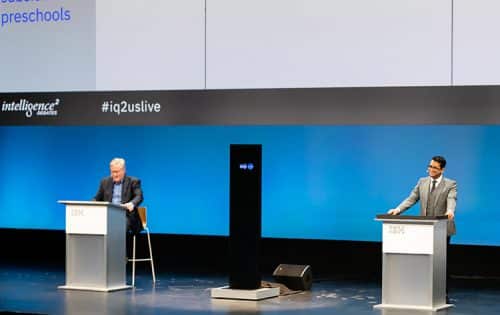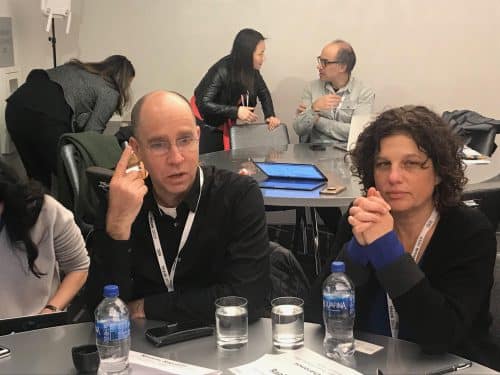Says Dr. Noam Salonim, who is the head of the development team during IBM's THINK 2019 conference in San Francisco, in which Project Debater competed against the world debate champion

Project Debater - IBM's debating computer based on artificial intelligence has another test this week, a confrontation with Harish Natarajan, Harish Natarajan is a graduate of Oxford and Cambridge Universities in the UK, and is considered the person with a world record for victories in debating competitions. The moderator also had experience in moderating debates, John Donovan, a television presenter and journalist who won four Emmy Awards for documentaries, and also serves as the CEO of the Intelligence Squared US debate club. On behalf of the IBM Research Center in Haifa on the development of Project Debater.
The question that the two competitors - the human and the computer - received a few minutes before the event was whether the pre-compulsory education system should be subsidized, when Project Debater was assigned the task of defending the decision while Natarajan was chosen to present the opposing side.
The debater and Natarajan were given four minutes to present their argument, then another four minutes to respond to the opponent's words, and finally each side was required to summarize their position in two minutes. The main argument of artificial intelligence was that the subsidy allows the poor to send their children to pre-compulsory education and provide them with a basis for the rest of their lives, while Natarajan argued that such a subsidy would reach mainly the middle class who send their children to paid pre-compulsory education anyway.
According to Salonim, for the first time, the debater responded to things that were not said explicitly, but were implied from nuances in Natarajan's words, according to which a subsidy will inevitably cause a decrease in the level of education in these kindergartens. Deuter understood this and responded to it. In a conversation with people and computers, Salonim said: After the debate, people in the audience said that it was not clear to them whether they should have guessed who the person was and who was not, when the machine showed more empathy for the person's needs. She is not aware in any way but the arguments she made were of this kind, and Arish only showed logical arguments, it was unexpected. However, it is not designed to pass the Turing test. Certainly not at this stage. At this stage, she managed quite well to maintain a uniform line of argument and to identify the relevant sentences that support the argument from among all the sentences that deal with the subject, and also to understand what expressions are synonymous with PRE SCHOOL such as Nursery school or pre education.
The recording of the debate
How does it work?
Salonim: "The debater's memory contains about 40 million articles, including close to a billion sentences. In order for the system to respond quickly and not have to go through the entire memory for each argument, we developed a system that knows how to identify the relevant sentences regardless of which insurance was used. The process is called wikipedia - that is, entering an article in Wikipedia and reading it, she finds all the phrases that are being searched for. This Wikipedianization is completed before the debates, because this requires several days, and then, when the system receives the topic of the debate, it can only retrieve the sentences that mention the concept."
What is the difference in the current debate compared to the first debates when the technology was introduced?
Salonim: "In recent months, we have developed additional capabilities where the system goes beyond the specific concept of the debate, but this was not tried yesterday. For example, the debater defended the need for social cohesion. This system could have brought the debate to the question of which is better - capitalism or socialism. The system should discover this by itself and incorporate it into the arguments."
The moderator of the event, John Donovan, as mentioned a veteran debate moderator, added in this context that he did not ask the participants follow-up questions, as was done in a debate between two people, because the system is not yet ready for that.

Whereas Aharonov added in an interview to People and Computers that the Turing test has no meaning because the development was not intended to develop a system that would allow humans but to assist them. Each side has its advantages - the computer remembers huge amounts of information and can explain it to a person, while humans can formulate a longer logical line of thought and together they will do more."
As for the question of how they can check that the system is indeed accurate, Aharonov answered that the developers put the system through a series of trainings. Also, every part of the system is checked, for example the engine that evaluates whether a certain sentence supports or contradicts the claim, and so on in all the engines. After we test each engine individually, we analyze the arguments to understand how the overall system performed.
